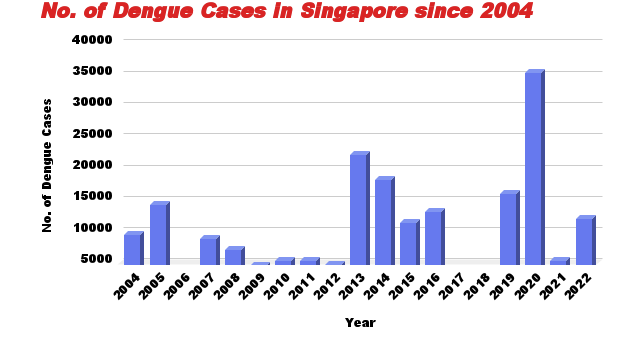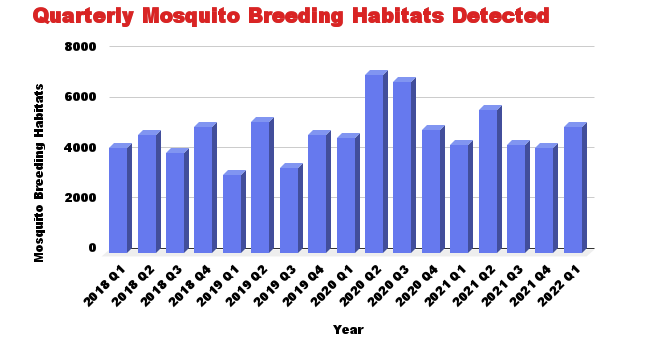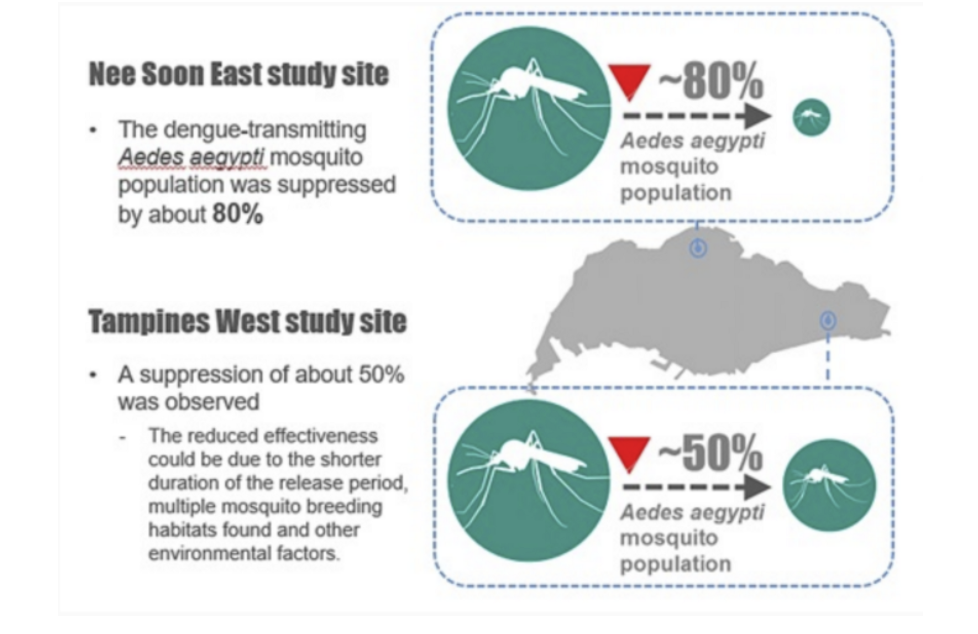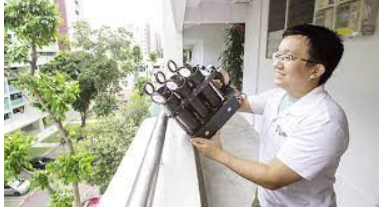How Singapore Is Looking to Solve Its’ Dengue Health Epidemic?


· 5 min read
Singapore has a long history of fighting Dengue cases caused by the female Aedes mosquito’s bite. The likelihood of an individual catching Dengue is high — according to the Ministry of Health (Singapore), an individual can be prone to dengue infection up to 4 times in a lifetime!
The dengue case counts figures in Singapore over the years were obtained from Statista, the National Library of Medicine, and Channel News Asia, and plotted in the following chart. The figure for this year was last updated on 3 June 2022.

While the chart showed relatively near-zero cases for 2017 & 2018, it was a decade low of 2767 & 3285 cases, respectively.
The year 2020 was an alarming year, with cases peaking above 35000. The authorities have now moved fast to focus on containing this year’s rising cases, in a bid to prevent them from escalating exponentially.
There were neither sufficient nor available official data on the fatality counts before 2018. However, an official source of the National Environmental Agency provided the data from 2018 to March 2022. While death remains low based on the number of mosquito habitats detected, it is still a cause of concern.

The chart below also summarizes the mosquito habitats detected quarterly in Singapore.

Drawing reference from the quarterly mosquito breeding habitats charts above, it is almost certain mosquito breeding sites will continue to grow. The following could further amplify the situation:
The weather in Singapore over the past few years has gotten more unpredictable, alternating between higher hots and colder colds. You may wish to read what I wrote about it last year.
Singapore resides near the equator, leaving it exposed to the Northeast and Southwest Monsoon annually, which leads to the constant high humidity within the country.
Such weather conditions favor the Aedes mosquitoes breeding and activities. With the increased rate of climate change, Singapore and many other South-East Asia counties will likely be experiencing furthermore erratic weather in the future.
This year, Singapore had re-opened its borders to foreign workers’ entry. Due to Covid-19 restrictions in the last two years, many ongoing construction projects were stalled or postponed due to the lack of on-site workers.
With on-site workers’ headcount increasing, many previously delayed, in addition to new construction projects, are now on the double to meet deadlines, with the majority being public housing. The increased number of construction sites now exposed to water ponding after heavy rains would increase the likelihood of them meeting the conditions of new mosquito breeding sites.
Many family-friendly potted plants found new homes during the Covid-19 lockdown and heightened alert period. And this trend is set to continue. People have found tranquillity and its therapeutic effects through home gardening and have now deemed home gardening a hobby.
Singapore 30 by 30 is An Agri-project that aims to achieve 30% of our food consumption being locally and sustainably produced. As a result, Singapore has seen an increase in Hydroponic farming. The farm is less labor-intensive, and crops harvested were healthier with less or no pesticide, compared to traditional farming methods. The project also encourages the usage of building rooftops if conditions are suitable.
The increase in home gardening and urban farming sites has increased the mosquito breeding sites risks within residential homes and farming estates.
The mating and releasing of mosquitoes
Project Wolbachia is a project started by the World Mosquito Program. It involved the use of commonly found bacteria called Wolbachia within mosquitoes.
The male Wolbachia-carrier mosquitoes would be released into the wild, and when they mate with the Aedes female mosquitoes, Wolbachia would be deposited into the eggs. The research concludes that Wolbachia was able to fight off viruses such as dengue and Zika within the Aedes mosquitoes.
Upon mating, Aedes offspring carry Wolbachia in their bodies. This reduces their ability to transmit dengue and Zika.
How did the project lift-off in Singapore?
Project Wolbachia had previously achieved successes after adoption in nearby countries such as Vietnam in 2013 and Australia in 2015.
Following in their footstep, Singapore first adopted the project in 2016.
In 2019, the National Environment Agency announced a new facility to boost the Male Wolbachia-carrier Aedes mosquito for breeding.
The Potential Success of the Project in Singapore
Based on a study published by the National Environment Agency, there was a remarkable achievement of 50%-80% suppression of dengue-transmitting female Aedes mosquitoes in the two experimental sites shown below. These figures were rather promising on the surface. However, it covers less than a third of Singapore’s land.

This year, the government is stepping up of release of male Wolbachia-carrying Aedes mosquitoes with a detailed plan announced to the public this month to fight off the rising dengue cases.

Singapore spent a great deal of effort over the last five years since its early project adoption, from conducting field experimentation and data analysis to facilities preparation. These include public education, on-site survey, research, breeding, and others.
As of the latest planned mosquito release schedule, the plan would cover up to 31% of the nation’s housing estates. Based on the coverage, it is worthwhile to note that:
Future Thought Leaders is a democratic space presenting the thoughts and opinions of rising Energy & Sustainability writers, their opinions do not necessarily represent those of illuminem.
Kasper Benjamin Reimer Bjørkskov

Degrowth · Regeneration
illuminem briefings

Biodiversity · Sustainable Lifestyle
Jesse Scott

Carbon Market · Carbon Regulations
The Guardian

Power Grid · Climate Change
NPR

Climate Change · Public Governance
BBC

Biodiversity · Climate Change